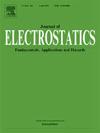Contributions of plasma simulations to physical understanding of surface dielectric barrier discharge for flow control (invited paper)
IF 2.1
4区 工程技术
Q3 ENGINEERING, ELECTRICAL & ELECTRONIC
引用次数: 0
Abstract
Surface dielectric barrier discharge (DBD) has been widely studied as active flow control actuator. DBD plasma actuators have two flow control mechanisms: the electrohydrodynamic (EHD) force and gas heating. Plasma fluid simulations are powerful tool to analyse the plasma physics involved in surface DBD. In this review, an overview is presented focusing on plasma fluid simulations of DBD plasma actuators. For numerical modelling, the three species drift-diffusion model with Local Field Approximation is most generally adopted. The important physical insight obtained from the analysis is that the negative discharge plays a dominant role in the EHD force generation. The electric field shielding by electron accumulation on the surface prevents the streamer formation and this leads to the development of negative ion cloud and strong EHD force generation. For the gas heating, the short-time energy transfer from plasma to the air leads to the formation of micro-shock waves and to the flow modification. Furthermore, structural variations such as the multi-electrode configuration combining AC and DC voltage inputs have significant influence on the discharge. The DC voltage input enhances the ion drift motion and the electric field at the discharge front, which results in the elongation of streamer and EHD force enhancement.
等离子体模拟对流动控制中表面介质阻挡放电物理理解的贡献(特邀论文)
表面介质阻挡放电(DBD)作为主动流量控制执行器得到了广泛的研究。DBD等离子体执行器有两种流量控制机制:电流体动力(EHD)力和气体加热。等离子体流体模拟是分析表面DBD等离子体物理特性的有力工具。本文对DBD等离子体致动器的等离子体流体模拟进行了综述。在数值模拟中,通常采用局部场近似的三种漂移扩散模型。从分析中得到的重要物理见解是,负放电在EHD力的产生中起主导作用。表面电子积聚的电场屏蔽阻止了流光的形成,导致负离子云的发展和强EHD力的产生。对于气体加热,等离子体向空气的短时间能量传递导致微激波的形成和流动的改变。此外,结构变化,如结合交流和直流电压输入的多电极配置,对放电有显著影响。直流电压输入增强了离子漂移运动和放电前电场,导致流线延长和EHD力增强。
本文章由计算机程序翻译,如有差异,请以英文原文为准。
求助全文
约1分钟内获得全文
求助全文
来源期刊

Journal of Electrostatics
工程技术-工程:电子与电气
CiteScore
4.00
自引率
11.10%
发文量
81
审稿时长
49 days
期刊介绍:
The Journal of Electrostatics is the leading forum for publishing research findings that advance knowledge in the field of electrostatics. We invite submissions in the following areas:
Electrostatic charge separation processes.
Electrostatic manipulation of particles, droplets, and biological cells.
Electrostatically driven or controlled fluid flow.
Electrostatics in the gas phase.
 求助内容:
求助内容: 应助结果提醒方式:
应助结果提醒方式:


